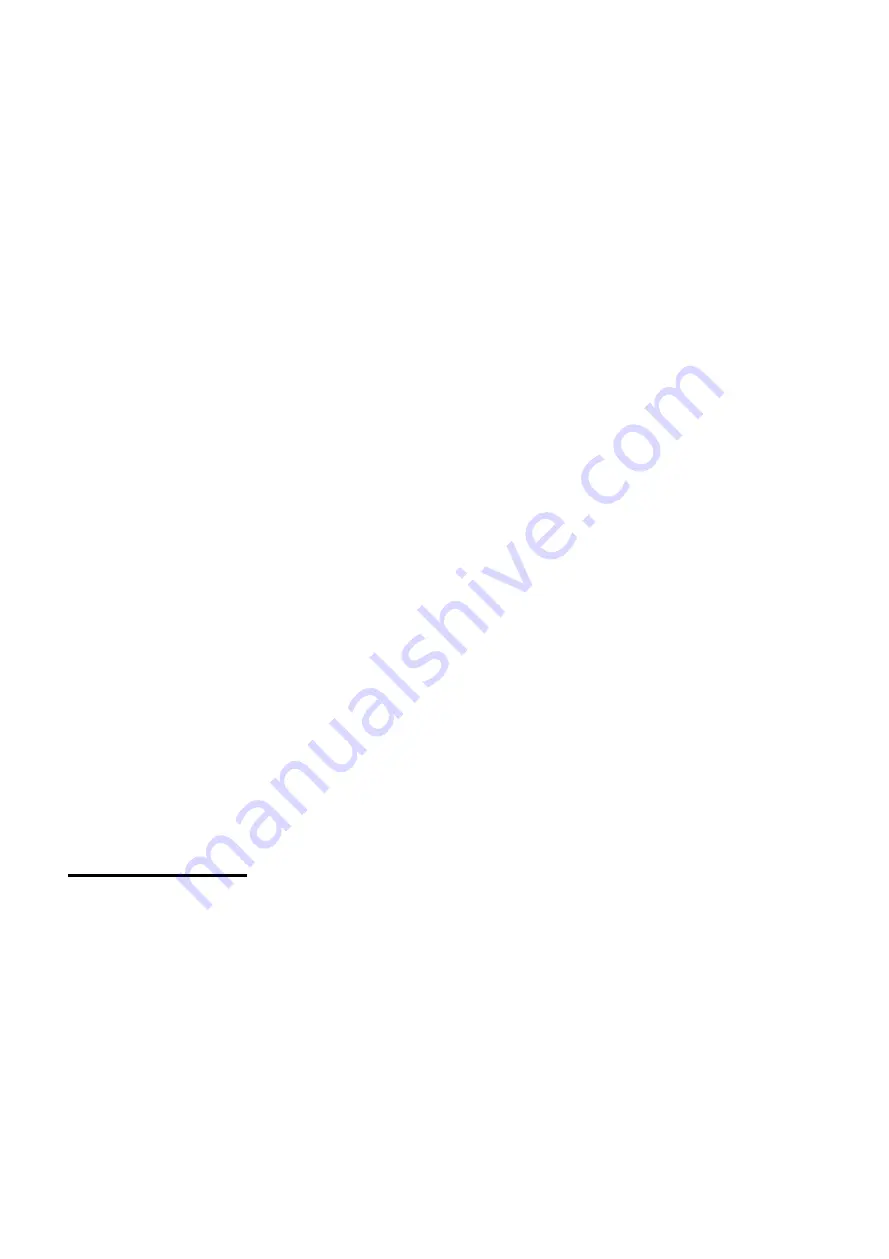
ORIGINAL INSTRUCTIONS
and may cause binding on the spinning saw blade while cutting. There should be no nails or foreign
objects in the workpiece.
h)
Do not use the saw until the table is clear of all tools, wood scraps, etc., except for the
workpiece.
Small debris or loose pieces of wood or other objects that contact the revolving blade can
be thrown with high speed.
i)
Cut only one workpiece at a time.
Stacked multiple workpieces cannot be adequately clamped or
braced and may bind on the blade or shift during cutting.
j)
Ensure the mitre saw is mounted or placed on a level, firm work surface before use.
A level and
firm work surface reduces the risk of the mitre saw becoming unstable.
k)
Plan your work. Every time you change the bevel or mitre angle setting, make sure the
adjustable fence is set correctly to support the workpiece and will not interfere with the blade or
the guarding system.
Without turning the tool “ON” and with no workpiece on the table, move the saw
blade through a complete simulated cut to assure there will be no interference or danger of cutting the
fence.
NOTE The phrase “bevel or” does not apply for saws without bevel adjustment.
l)
Provide adequate support such as table extensions, saw horses, etc. for a workpiece that is
wider or longer than the table top
.
Workpieces longer or wider than the mitre saw table can tip if not
securely supported. If the cut-off piece or workpiece tips, it can lift the lower guard or be thrown by the
spinning blade.
m)
Do not use another person as a substitute for a table extension or as additional support.
Unstable support for the workpiece can cause the blade to bind or the workpiece to shift during the
cutting operation pulling you and the helper into the spinning blade.
n)
The cut-off piece must not be jammed or pressed by any means against the spinning saw
blade.
If confined, i.e. using length stops, the cut-off piece could get wedged against the blade and
thrown violently.
o)
Always use a clamp or a fixture designed to properly support round material such as rods or
tubing.
Rods have a tendency to roll while being cut, causing the blade to “bite” and pull the work with
your hand into the blade.
p)
Let the blade reach full speed before contacting the workpiece.
This will reduce the risk of the
workpiece being thrown.
q)
If the workpiece or blade becomes jammed, turn the mitre saw off. Wait for all moving parts to
stop and disconnect the plug from the power source and/or remove the battery pack. Then work
to free the jammed material.
Continued sawing with a jammed workpiece could cause loss of control
or damage to the mitre saw.
r)
After finishing the cut, release the switch, hold the saw head down and wait for the blade to
stop before removing the cut-off piece.
Reaching with your hand near the coasting blade is
dangerous.
s)
Hold the handle firmly when making an incomplete cut or when releasing the switch before
the saw head is completely in the down position.
The braking action of the saw may cause the saw
head to be suddenly pulled downward, causing a risk of injury.
Additional instructions
-
When using the saw, wear personal protective equipment such as safety goggles or a screen,
helmet, dust mask, gloves, non-slip footwear and protective clothing
-
Ensure that there is sufficient, generalized or localized lighting.
-
Do not use the saw when the protective parts are not in place.
-
Do not use the saw to cut metal or masonry parts.
-
Do not allow persons under 18 to operate the tool.
-
Ensure that users of this tool have received professional training and know how to set and use this
tool.
-
Do not use the saw to cut firewood
-
Remove all stumbling blocks from the work area.
-
Report or record any defects as soon as possible, including the guards and the saw blade.
-
Install the saw as much as possible on a work stand. Always stay on the side when the saw is
turning.
-
Never use a saw blade that is cracked or deformed.
-
When cutting round wood, use a clamping assembly to prevent slippage of the workpiece.
Summary of Contents for FSOR20255
Page 10: ...ORIGINAL INSTRUCTIONS 3 DESCRIPTION ...
Page 12: ...ORIGINAL INSTRUCTIONS 4 USE ...
Page 13: ...ORIGINAL INSTRUCTIONS ...
Page 14: ...ORIGINAL INSTRUCTIONS ...




















